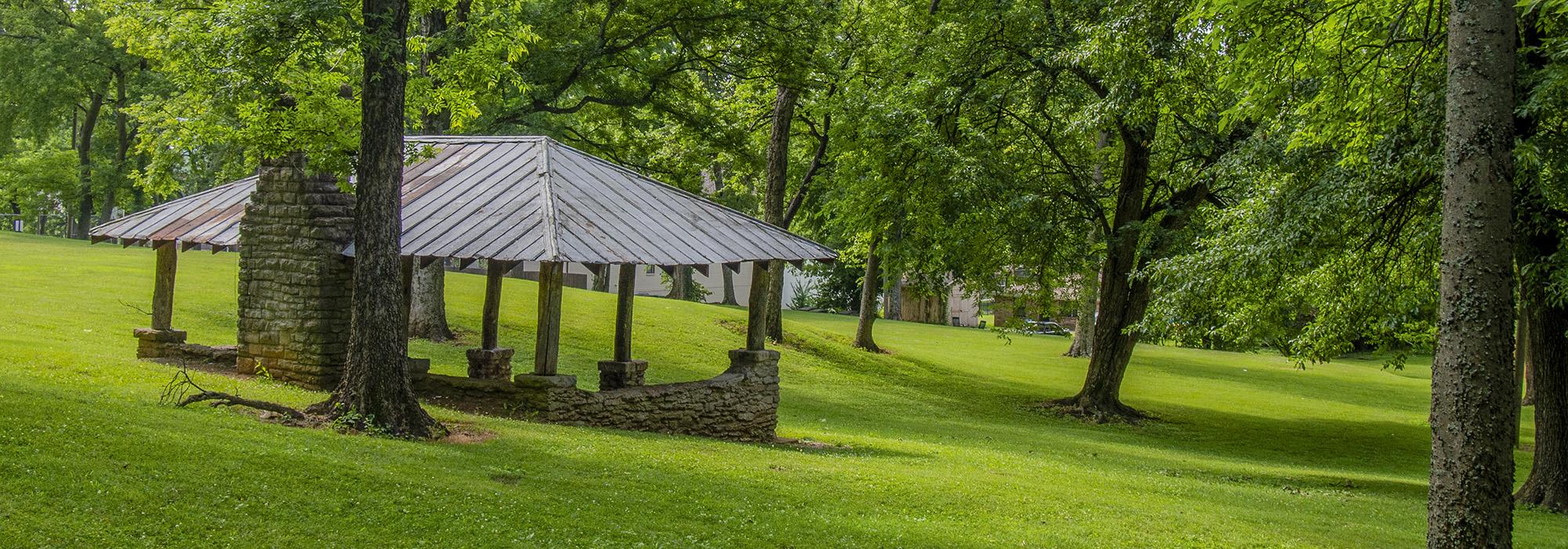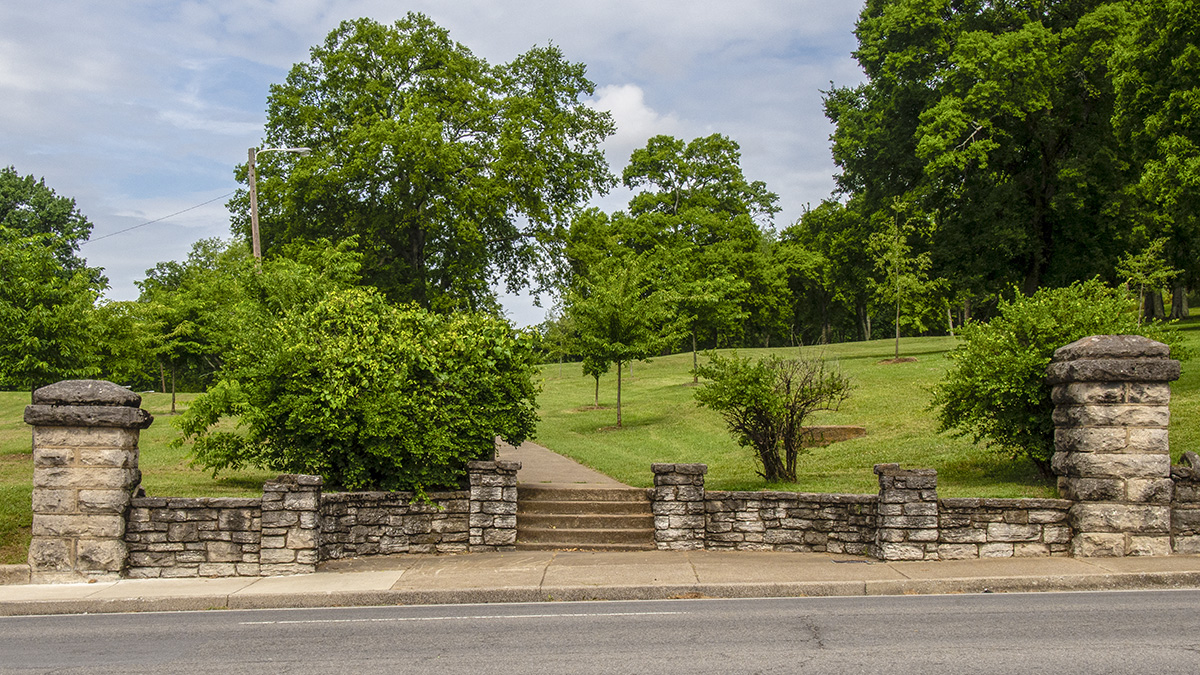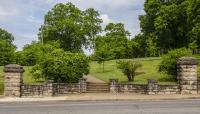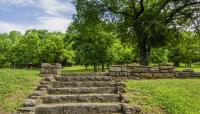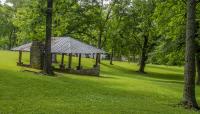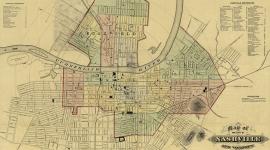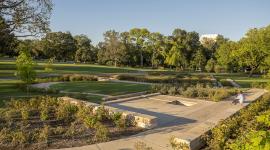Landscape Information
Located in the Edgehill neighborhood south of downtown Nashville, this twenty-acre park was the site of Fort Casino, build by Union forces who occupied the city during the Civil War, after which the fort was abandoned. Contiguous with the park on the north and looming over the hilly landscape is the massive Eighth Avenue Reservoir, an elliptical, above-ground water reservoir whose walls are some 34 feet high and built of limestone quarried from the nearby Currey Hill, today’s Rose Park. Designed in 1887 by city engineer J.A. Jowett and completed in late August 1889, the reservoir is divided into two chambers by a center wall, atop which is perched a Victorian-style, brick gatehouse containing valves and waterworks and providing shelter to a custodian. In November 1912, part of the southeastern portion of the reservoir’s wall gave way, sending some 25 million gallons of water (the contents of one of the two chambers) into the surrounding neighborhood and securing the reservoir’s place in local lore. The land immediately south of the reservoir was established as a public park in 1914.
The park’s main entrance is on Argyle Street, along the south, where a paved road leads to a small parking area. Just within the park’s southern border are basketball and tennis courts, while a playground is situated along the eastern edge, near Hillside Avenue. A walkway crosses the park from Eighth Avenue, on the east, where it is announced by an exedra and two flanking pillars, all made of limestone. The path crosses between two picnic shelters, which are sequestered among stands of large-canopy trees. Several low retaining walls, also of limestone, mark the rise of the rolling, hilly topography as it ascends to the north to meet the reservoir, whose base is screened by a dense thickets of trees. The Eighth Avenue Reservoir, which is still in use, was listed in the National Register of Historic Places in 1978.



